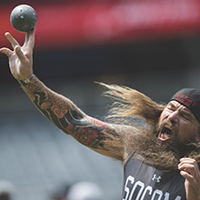Speed-power based training in the elderly and its potential for daily movement function enhancement
Resistance exercise is widely recommended strategy to improve functional ability and quality of life of the elderly. Novel resistance exercises approaches, such as flywheel exercise have recently emerged as superior alternatives to traditional methods. Eccentic exercise methods are well documented to elicit different and often the more pronounced effect on physical ability and function of the elderly. By reviewing the relevant scientific literature, we found that only limited studies have investigated the effects of flywheel exercise in the elderly, however, the results are very promising. Thus, more research is desired to explore the effect of flywheel exercise type in elderly individuals.
Downloads
How to Cite
PAGEPress has chosen to apply the Creative Commons Attribution NonCommercial 4.0 International License (CC BY-NC 4.0) to all manuscripts to be published.

 https://doi.org/10.4081/ejtm.2019.8898
https://doi.org/10.4081/ejtm.2019.8898





